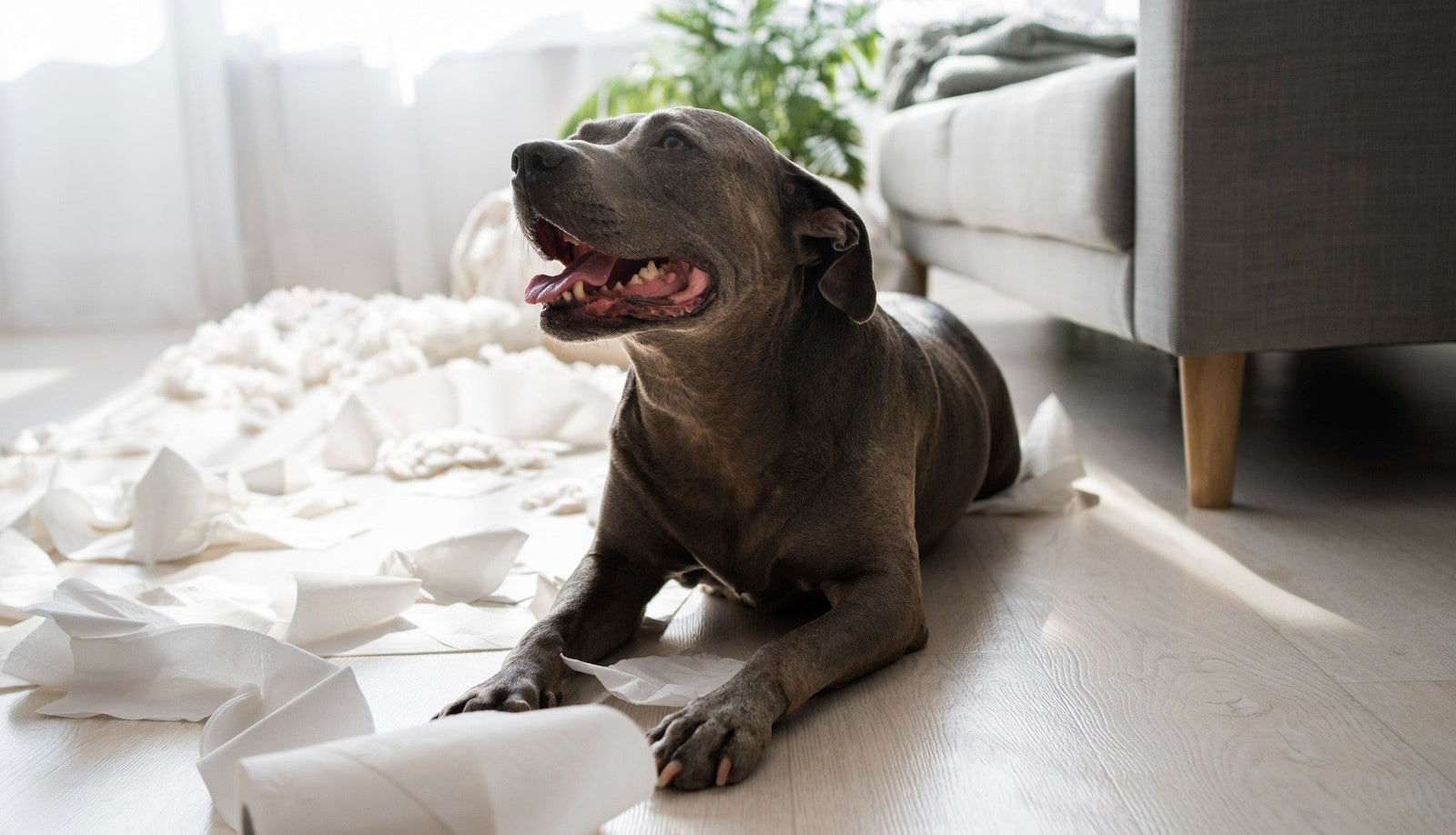FREE Shipping in the U.S. on Orders Over $59
FREE Shipping in the U.S. on Orders Over $59
If you’ve ever left your dog at home and come back to chewed-up shoes, scratched doors, or endless barking, you’re not alone. Separation anxiety is something many dog parents deal with, and it can feel overwhelming. You don’t want your pup to suffer, but you also can’t be with them 24/7.
The good news is that there are ways to make time apart easier for your furry friend. One of the most effective? Stimulating toys that keep their mind and mouths busy. These toys don’t just entertain—they help calm stress, give your dog confidence, and turn alone time into something more positive.
Let’s walk through what separation anxiety looks like, why stimulating toys are so helpful, and how you can use them to create a calmer, happier pup.
Separation anxiety is more than a little whining when you leave the house. It’s a real emotional struggle for dogs. Common signs include:
Chewing furniture, shoes, or doors
Constant barking, whining, or howling
Pacing, panting, or drooling when you’re gone
Scratching at doors or trying to escape
Having accidents indoors, even if house-trained
If you notice these behaviors mainly when your dog is left alone, chances are they’re struggling with separation anxiety—not “being naughty.”
Think of it like this: when you’re stressed, keeping busy helps distract you. Dogs are the same. Toys that make them chew, lick, or figure things out give their brain something to focus on instead of worrying about where they are.
Here’s why stimulating toys work so well:

Not all toys are created equal. Some dogs need tough chew options, while others do better with puzzle games. Here are a few that work especially well for easing anxiety:
Durable rubber toys that you can fill with food or frozen treats.
Great for long-lasting play while you’re out.
Freezbone is made from 100% natural rubber that keeps dogs engaged, and the best part—you can fill it with ready-to-use Freezbone refills, just kibbles, or any recipe of your choice. Choice.

Toys that release food when nudged, pawed, or rolled.
Perfect for smart, active breeds that need a mental challenge.
Hide treats inside toys or around the house.
Let your dog use their nose, which is one of the best forms of mental stimulation.
Spread peanut butter, yogurt, or wet food on them.
Slow licking has a naturally calming effect.
Handing your dog a toy isn’t enough—how you introduce it matters. Here are a few tips that I’ve found work well:
Practice when you’re home: Let your pup get used to the toy while you’re still around.
Make it exciting: Add praise or treats when they interact with the toy.
Start small: Leave the room for a few minutes at first, then build up to longer times.
Rotate toys: Keep things fresh by switching up which toy they get.
For more ideas on how to plan and rotate treats through the week, check out our Freezbone Treat Planner↗️
Q: Can toys cure separation anxiety completely?
A: Toys help a lot, but they’re just one piece of the puzzle. Exercise, training, and routine also play a big role. Severe cases may need a trainer or vet’s support.
Q: Is it safe to leave my dog alone with a toy?
A: As long as the toy is made for dogs, durable, and you’ve checked it for wear, most are safe to leave during absences.
Toys are amazing tools, but they work best alongside other healthy habits:
Daily exercise: Walks, fetch, or play sessions help burn off nervous energy.
Routine: Dogs feel calmer when they know what to expect.
Calm hellos and goodbyes: Avoid making departures too emotional—it can heighten anxiety.
Training for independence: Reward calm behavior when your dog spends time alone, even if just in another room.
Separation anxiety is emotional distress, not bad behavior.
Stimulating toys help by distracting, calming, and boosting confidence.
Refillable chew toys, puzzles, and lick mats are excellent options.
Introduce toys gradually and rotate them for the best results.
Combine toys with exercise, routine, and training for lasting progress.
Watching your dog struggle with separation anxiety is tough. But with the right tools and patience, things can get better. Stimulating toys—especially those that combine chewing and food rewards- can turn alone time into something your dog actually looks forward to.
Every dog deserves to feel safe and secure, even when you’re not there. With consistency, a little creativity, and the right enrichment, you can help your pup handle time apart with much less stress.
